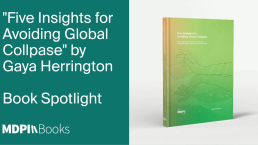
Achieving Sustainable Funding for Open Access Books
Open access books are freely available for anyone to access. But this accessibility comes at a cost, literally. Book processing charges are necessary to offset the cost of production and the low print sales for open access publishers. However, achieving funding to cover these charges can be difficult.
In this article, we’ll look at the open access book publishing model, how this model is supported by book processing charges, and what can be done to achieve sustainable funding for open access books.
What is open access book publishing?
The model is more complex and extensive when compared to open access journal publishing. The production process requires the coordination of multiple departments. Production consists of formatting and typesetting, language editing, cover design, figure editing (if requested), creating a book index (if requested), and conversion to a machine-readable XML format.
The involvement of many departments in this process means the cost of producing a book is high. Furthermore, open access book publishers don’t generate high sales for print copies. So, how are the costs of publishing an open access book met?
Book publishing charges explained
Sustaining the open access book publishing model are book processing charges (BPCs). BPCs are payments made to a publisher to cover the costs involved in publishing a book as open access. They are usually paid upfront by an author’s funding body or institution.
Book processing charges have been criticised, however. They have been accused of varying too much and worsening existing academic inequalities.
Indeed, the cost of publishing a monograph can range from as little as €500 to €18,500. It’s clear to see how institutions from lower-income countries may struggle to access the funding required to meet the costs for authors.
These debates around the uncertainty and inequalities behind book processing charges are important. They signify that work needs to be done to improve the infrastructure of open access book publishing. Yet they also highlight how we can’t give up on this publishing model; the benefits of open access books are too great to go to waste.
Achieving sustainable funding for open access books
This leaves us with the task of making the open access book publishing model sustainable. But how do we achieve sustainable funding?
This is the question at the heart of a recent report commissioned by the UKRI into the transition to open access book publishing. Let’s take a closer look at some of the key findings from the report.
OA book publishing needs the proactive support of authors
Many authors show enthusiasm for the open access book publishing model. They recognise that it can benefit their subject disciplines and broaden access to research.
However, there is a lot of conflicting information surrounding publishing models and terms. Authors want to retain full control over their work, so any ambiguity over publication rights is bound to impact rates of publication.
There are also doubts about the quality of open access publishing in general. It is important to note that there are good and bad publishers under any revenue model. These quality concerns are not unique to OA publishing—they are currently just more explicit due to the relative novelty of this model.
OA book publishing needs the proactive support of library customers
Open access is attractive for librarians; texts can be added to their collections at no cost. However, fewer than 1/3 helped to fund open access books by authors at their institutions.
This financial support from libraries is crucial; many revenue models depend on this support to sustain them.
The support of library customers is also integral, yet there are no means to directly interact with this customer base for smaller and specialist book publishers. This makes it harder for marketing campaigns and strategies to directly appeal to such audiences.
Librarians face obstacles in making OA book publishing the norm
The main obstacles librarians face in making open access book publishing the norm are financial and practical. Many libraries are committed to expanding publishing opportunities for their researchers. However, they are limited to the confines of their existing budgets.
Other obstacles include administrative burdens. The workflows for open access and traditional books are markedly different; this makes it difficult to transition normal purchasing processes to support OA books. Indeed, there needs to be greater convergence between open infrastructure and the book supply chain infrastructure.
Most promising OA revenue models
Two of the most promising revenue models for open access were found to be consortial funding and BPCs.
With consortial funding, publishers receive visibility, awareness, and financial support through a distributed network of supporters. Importantly, authors do not need to provide funding to support the publication of their OA book.
BPCs are efficient as each published book can be priced to cover its direct and indirect costs. This model works well for authors with access to funding; however, many authors are unfunded.
Additionally, pay-to-publish models risk privileging funded authors, wealthy institutions, and established academics on permanent contracts. They also neglect authors from specific disciplines, such as humanities and social science, where direct funding is less established. Indeed, many funders, librarians, and publishers are increasingly concerned about the equity of the BPC model.
Areas for improvement
The UKRI report identifies many areas of improvement for open access book publishing in the future.
One of those areas is the supply chain. There needs to be consistent and scalable funding and purchasing of books. Books must continue to be discovered by libraries who can make purchases or provide funding.
Indeed, without evolution within the supply chain, small publishers are likely to need support from larger publishing partners.
Currently, the increase in opportunities for OA book publishing by scholars identified in the report is incompatible with the lack of an adequate and systematic pool of funding resources. There’s a need for infrastructure that would allow many libraries to contribute small amounts to a financial pool from which specific books of shared interest could then be funded.
The vision for open access book publishing
Going forward, there’s a clear vision set out by UKRI. Stakeholders need to come together to ensure that OA book publishing is:
- Rewarding and sustainable for all stakeholders
- Affordable and accessible
- Enabled by infrastructure
- Transparent
We must also create a world in which OA books are:
- Quality-assured
- Findable and useable
- Reusable
- Preserved
- Impactful
Here at MDPI Books, we’re committed to ensuring that important, peer-reviewed research remains accessible to all.
We’re also committed to helping authors realise their dream of publishing a book. That’s why we’ve created a comprehensive guide on how to find funding to cover the BPC charges for your open access book.
Want to learn more about open access book publishing? See our articles on the topic.









